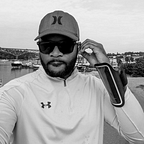Seattle to Austin on Electric (Part 1)
During the summer of 2021, our family of four embarked on a two-week, cross-country adventure from Seattle to Austin and back, in our 2021 Tesla Model Y Long Range, covering roughly 6000 miles. As Pacific Northwest (PNW) residents for over ten years, we had already embraced the electric vehicle lifestyle, frequently taking shorter road trips throughout the region, including Washington, Oregon, and British Columbia’s Vancouver area in our EV. A cross-country journey had been on our bucket list for quite some time, and the summer of 2021 presented the perfect opportunity. Additionally, with the COVID-19 pandemic still affecting the nation at the time, our annual family reunion provided a fitting reason to hit the road while respecting everyone’s concerns and sensitivities.
For any EV owner, embarking on a lengthy road trip demands meticulous planning. Furthermore, traveling with two young children meant that our itinerary had to include thoughtfully planned stops and engaging activities. Our journey’s initial phase was to bring us to Denver, CO, where we intended to visit a dear friend and spend a day or two before continuing towards Texas. By utilizing the Tesla road trip planner, which displayed all Supercharger locations along our path, we strategically scheduled our first overnight stay in Twin Falls, ID — a halfway point between Seattle and Denver.
Before setting off on our adventure, we purchased and installed the Tesla Tow package, enabling us to attach the Tesla bike hitch rack to the rear of our Model Y. This configuration allowed us to transport four bikes throughout our cross-country journey. A word of advice for future Tesla Model Y owners: the tow package does not come pre-installed on the vehicle. If you anticipate needing to haul equipment (such as bikes, boats, or campers), it’s advisable to add this package to your order during the initial selection process. Keep in mind that adding the tow package post-delivery will incur additional costs, as it requires programming adjustments to the Tesla computer system.
With everything prepared, we opted to transport four of our bikes using the Tesla bike hitch rack. Loading the bikes onto the rack was a breeze, despite the varying sizes of our collection, which included both smaller and larger bikes. The rack’s robust design ensured that the bikes remained securely in place throughout our journey, providing a dependable and worry-free transportation solution.
Our initial plan was to depart from Seattle before midday; however, we found ourselves leaving closer to 2 pm. The Tesla trip planner is typically quite precise, and according to our calculations, we anticipated a 12-hour journey to reach Twin Falls, Idaho. Consequently, we reserved an overnight stay at the Holiday Inn Express near the Tesla Supercharger in Twin Falls. Our goal was to arrive by 2 am the following day, catch up on some sleep, recharge the car overnight, and resume our journey towards Denver around 10 am later that morning.
Our initial estimates turned out to be inaccurate, as we overlooked a crucial factor — the added weight of four bikes! As mentioned earlier, we had undertaken numerous EV road trips by this point, but never with any cargo in tow. We quickly discovered that hauling the bikes significantly impacted our range calculations, sometimes by as much as 30%, sometimes over that value. Consequently, the vehicle’s computer recalculated our range multiple times while driving, which led to considerable discrepancies in our range estimates.
Our initial stop was at the Supercharger in Yakima, located in eastern Washington. The 142-mile journey from Seattle to Yakima should have taken just over two hours, with plenty of charge to spare, considering we started with a 100% state of charge (SOC) on a long range model Y, which has an advertised range of 330 miles on a full charge. However, due to the diminished range resulting from carrying four bikes, we arrived at the Yakima Supercharger with less than 25% SOC. This outcome diverged from my previous experiences, as the drag caused by hauling the load had a substantial impact on our range.
When traveling in an EV, it is generally best to stop at charging stations just long enough to obtain sufficient charge for reaching the next station, rather than fully charging the battery at a single location. Nevertheless, at the Yakima Supercharger, we opted to deviate from the usual long road trip practice and charge our battery to 100%. We made this decision because we were uncertain about the extent of range loss we would experience before reaching the next charging station, and the car’s calculations did not account for the range reduction caused by the drag from our cargo.
As we journeyed, we noticed other internal combustion engine (ICE) vehicles transporting multiple bikes, which led us to ponder the impact on their fuel efficiency and whether their haul was more efficient than our EV’s. That topic, however, might be better suited for a separate blog post.
In any case, taking into account our reduced range, we persevered eastward, stopping at all the charging stations indicated on our trip planner and continuing through the night.
Finally, after driving through the night, we reached our hotel in Twin Falls, Idaho, around 8 am the following day— over six hours later than our initial estimated arrival of 2 am. With limited time, we quickly checked in, took showers, enjoyed a brief breakfast, and managed to rest for a few moments before checking out and resuming our journey towards Denver.
Story continues. Stay tuned for Part 2!
